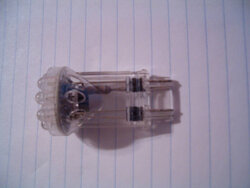- Joined
- November 11, 2005
- Messages
- 56,687
- Reaction score
- 1,186
- City, State
- Brooklyn, NY
- Year, Model & Trim Level
- 88 89 93 95 96 Aerostars
There was an interesting article just published in the April 2006 issue of Gears Magazine which addressed an issue about LED rear taillight bulbs preventing TCC solenoid engagement. The computer assumes that the brakes are applied since it only sees a positive (+) voltage from its built in bias resistor, and the brake pedal switch. The rear bulbs are suppose to pull down this voltage to ground (-). Here is the link to this article: http://www.gearsmagazine.com/images/issues/4_2006/2006_04_38.pdf. I've heard about LED bulbs preventing mechanical flashers from working properly, but not anything related to the transmission's operation. There are bias resistors which could be used in that application to help prevent that problem, but this article just recommends not using them at all in this particular case.











